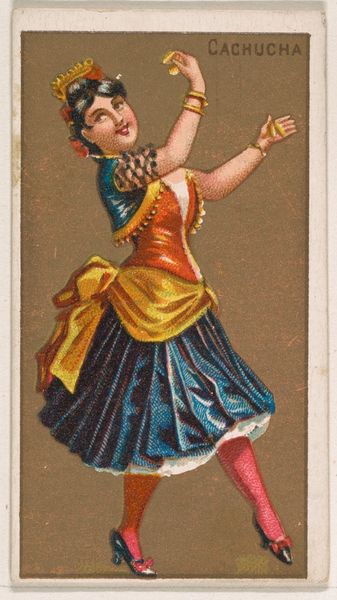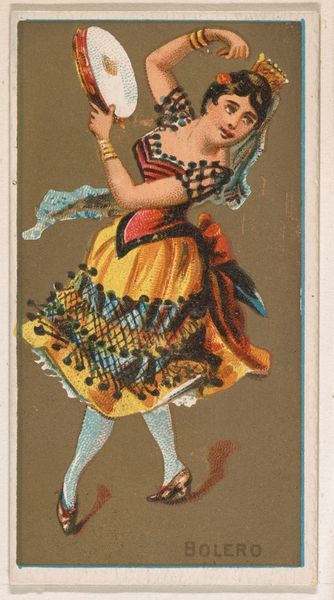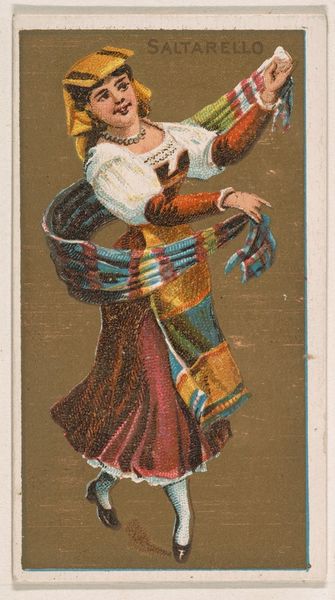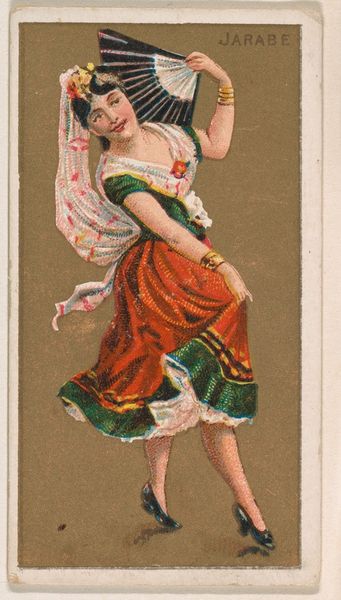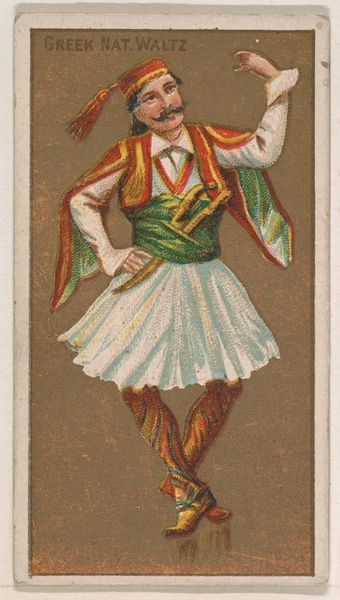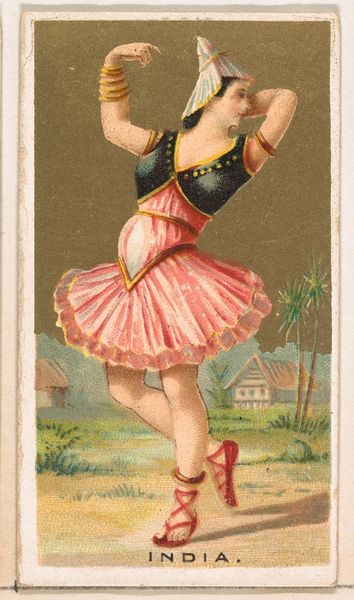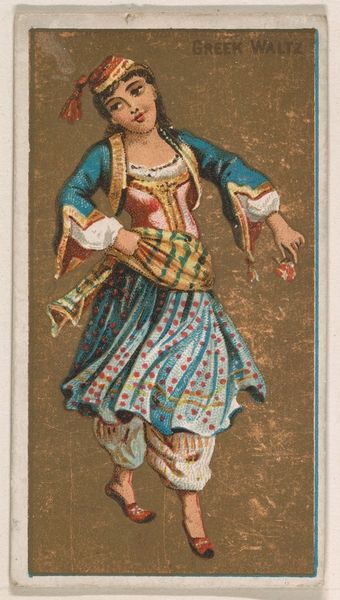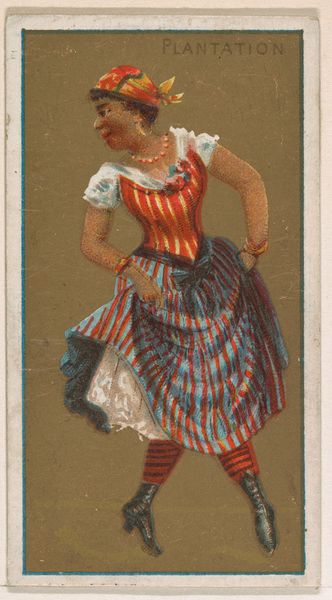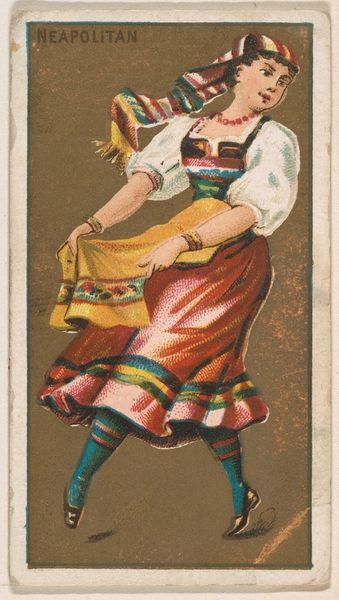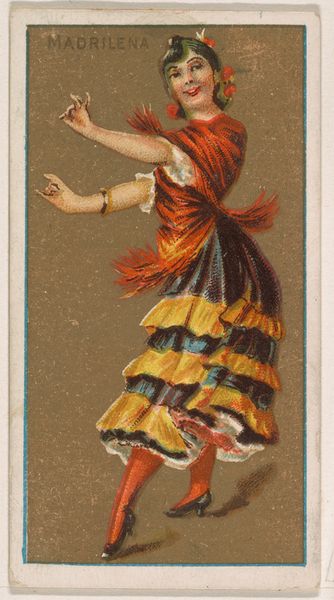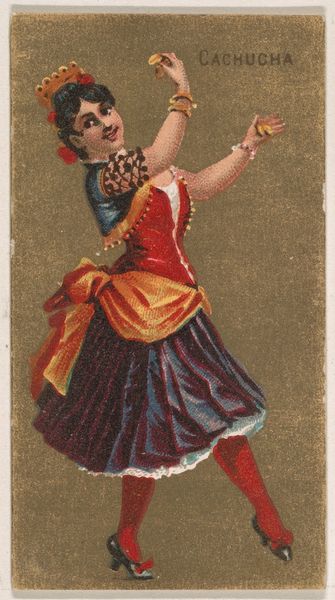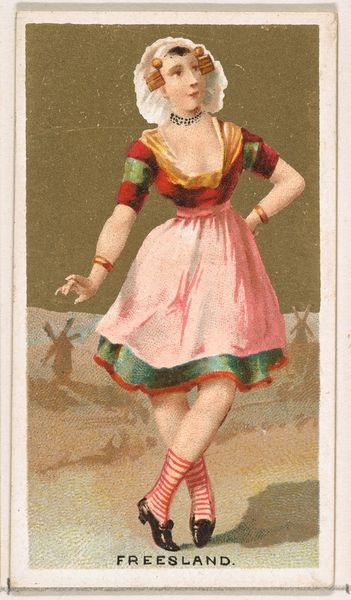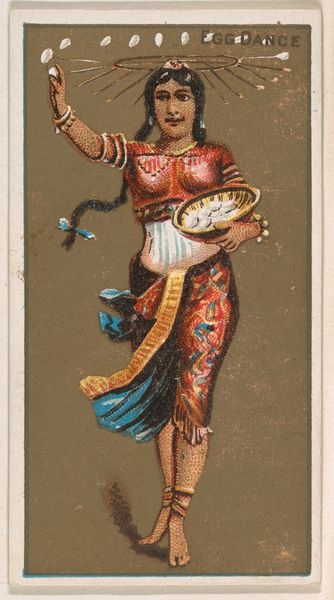
Gitana, from National Dances (N225, Type 1) issued by Kinney Bros. 1889
0:00
0:00
drawing, print, watercolor
#
drawing
#
water colours
# print
#
figuration
#
oil painting
#
watercolor
#
coloured pencil
#
orientalism
#
watercolour illustration
#
genre-painting
#
watercolor
Dimensions: Sheet: 2 3/4 × 1 1/2 in. (7 × 3.8 cm)
Copyright: Public Domain
Curator: Here we have a trade card titled "Gitana, from National Dances," created around 1889 by Kinney Bros. Tobacco Company. It's currently held at the Metropolitan Museum of Art. Editor: My first thought is that the muted color palette evokes a sense of restrained energy, as though a vibrant dance has been distilled onto this small, rectangular field. Curator: These trade cards were immensely popular. "Gitana," meaning Gypsy woman, is part of a larger series representing "national dances" which reflects late 19th-century European fascination with exoticism, often romanticizing or misrepresenting other cultures. In many cases reinforcing power dynamics within empires. Editor: Yes, look how the artist has simplified the dancer’s form to almost geometric shapes, creating visual harmony. The interplay of curves and lines, the arc of her arm mirroring the skirt's rhythm—it directs the viewer’s eye seamlessly. Curator: I think what's most important to note, though, is the inherently problematic gaze. How the so-called "Gitana" becomes a spectacle, part of a commercial project, reinforces stereotypes. Who is this “national dance” serving, and at whose expense? The dancer herself, likely from a marginalized community, becomes a signifier. Editor: Perhaps, but the strategic deployment of color adds structural support; for example, the red accents create this subtle but forceful sense of dynamism. This carefully orchestrated chromatic relationship gives the design integrity and depth. Curator: But we also must see it in the context of orientalism, even the aesthetic choices serve these power structures by presenting a stylized version of a woman, designed to meet certain exoticized expectations, ignoring her lived realities. Editor: Agreed, but even viewing it through that lens doesn't negate the calculated approach to shape and color on display here, it provides an anchor to guide us to a better understanding. Curator: It's interesting how analyzing structure brings forward important aspects for historical contexts. Ultimately, viewing through intersectional means leads to more rich insight on cultural exchange and appropriation. Editor: Precisely, appreciating structure allows us to be very careful, yet precise, about the image we’re studying so intently.
Comments
No comments
Be the first to comment and join the conversation on the ultimate creative platform.
